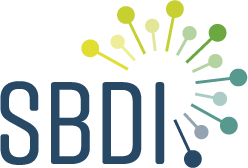SBDI datasets
SBDI data comes from sources such as monitoring programs, citizen science portals, genetic analyses of environmental samples, natural history collections and research projects. SBDI also provides access to similar data from around the world through GBIF and the Living Atlases community.
Accessing datasets in the SBDI Bioatlas
The SBDI datasets are listed in the collections module of the SBDI Bioatlas by data provider. By clicking on a dataset, you can view the metadata describing it. By clicking on the “Records” tab, you can see the taxonomic and temporal composition of the data, and any data quality issues. You can also conveniently access the entire record set in the SBDI Bioatlas.
The checklist datasets are listed separately in the species lists table of the SBDI Bioatlas. The links in the table allow you to conveniently work with these species sets in the SBDI Bioatlas.
All datasets, both point occurrence datasets and checklists, are included in the datasets list of the SBDI Bioatlas. This provides another way of getting an overview and working with the datasets in the SBDI Bioatlas. It is possible to view similar information in the GBIF portal by searching datasets with Sweden as the publishing country. A direct link to such a search is provided here. The GBIF listing includes both checklists and other types of datasets. The GBIF portal also allows you to explore information about the thousands of data publishers throughout the world that share open biodiversity data in tens of thousands of datasets.
Below we provide a brief overview of the SBDI datasets. Make sure to visit the collections module and species lists table for an up-to-date list of the available datasets.
Natural history collections data
SBDI provides a large number of datasets from natural history collections. They range from a few hundred to more than a million records. A few of the larger datasets include the Phanerogamic Botanical Collections at the Swedish Museum of Natural History, the Botanical Collections at the Biological Museum of Lund University, and the Fungi Collection at the Swedish Museum of Natural History.
Citizen science data
The Artportalen dataset is by far the largest of the SBDI datasets in terms of the number of records. It includes data from amateur naturalists on a wide range of organism groups, but birds dominate (about 70% of records). Many other data types are also included in the dataset.
Data from monitoring programs
Sweden has some of the longest-running biodiversity monitoring programs in the world. Increasingly, these data are shared through SBDI as sample-based data. Example monitoring datasets include the Swedish Bird Survey: Summer point count routes, the Swedish Bird Survey: Fixed routes, the National zoobenthos monitoring in Sweden, and the National phytoplankton monitoring in Sweden. The Swedish Bird Ringing Centre dataset further includes millions of records of birds that have been ringed in Sweden.
Research inventory data
Sweden is home to some of the most ambitious national insect inventory projects, among them the Swedish Malaise Trap Project. Data from the latter are made available in the Swedish Malaise Trap Project datasets, multiple sample-based datasets. The datasets are described in a data paper published by the project
Checklists
The SBDI checklist datasets include the Swedish national checklist and reference taxonomy, Dyntaxa and the Swedish Red List. Other checklists include the official list of Invasive Species in Sweden, and the List of sensitive species nationally protected in Sweden. Lists of species targeted by monitoring projects are also included, such as Pollinators and Coastal birds – Sweden.
Molecular biodiversity data
DNA sequencing of environmental samples is still in its infancy, but is likely to become a major source of SBDI data in the near future. We are working with other Swedish research infrastructures and with our international partners to offer sophisticated access to this new data stream. The key to the sequence-based biodiversity data is the Swedish ASV database, containing reference DNA sequences of Swedish biodiversity. The database links directly into the sequence-based records in the SBDI Bioatlas.
Forest monitoring data
The Swedish National Forest Inventory has collected data on Swedish forests since 1923. The project is run by the Department of Forest Management at SLU in Umeå. Swedish legislation rules out free release of the original data, but work is under way to integrate several processed versions of the data in SBDI. For now, contact the project directly for access to the data.
Biologging data
Biologging data is data collected from wild animals employing animal-attached electronic tags to uncover the hidden lives of wild animals. In the simplest case, the data is a time-series of positions, recording the movement of animals. Other more sophisticated sensor systems attached to the animals can collect information on the physiological status of the animal (heart rate, temperature, etc.), behaviour patterns (e.g. activity level or flight altitude) and other parameters of interest. Data is collected by tags and retrieved or remotely transmitted or, collected from radar/optical sensors that target animals. SBDI Biologging provides biologging data for a range of animal species. Our Biologging Portal currently contains a selection of data from mammals and birds from the two main data providers Lund University (CAnMove Centre of Animal Movement database) and the Swedish University of Agricultural Sciences (WRAM Wireless Remote Animal Monitoring database), but will be extended and include data from more species, including fish and evertebrates.
Data from the WRAM database contains rich biologging data for a range of animal species can also be viewed and obtained using the SBDI tool Wireless Remote Animal Monitoring (WRAM).
Archaeological biodiversity data
SBDI includes the unique Strategic Environmental Archaeology Database (SEAD) at Umeå University. It provides access to archaeological biodiversity data.
